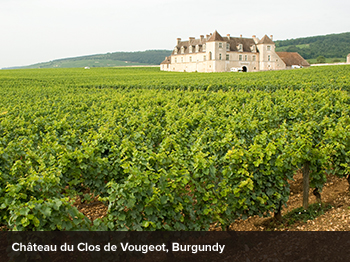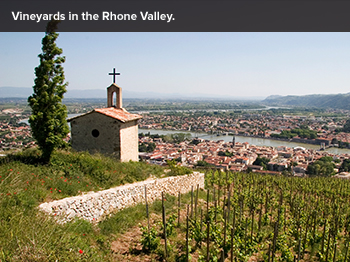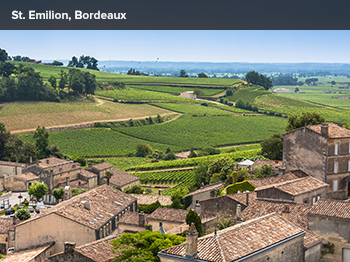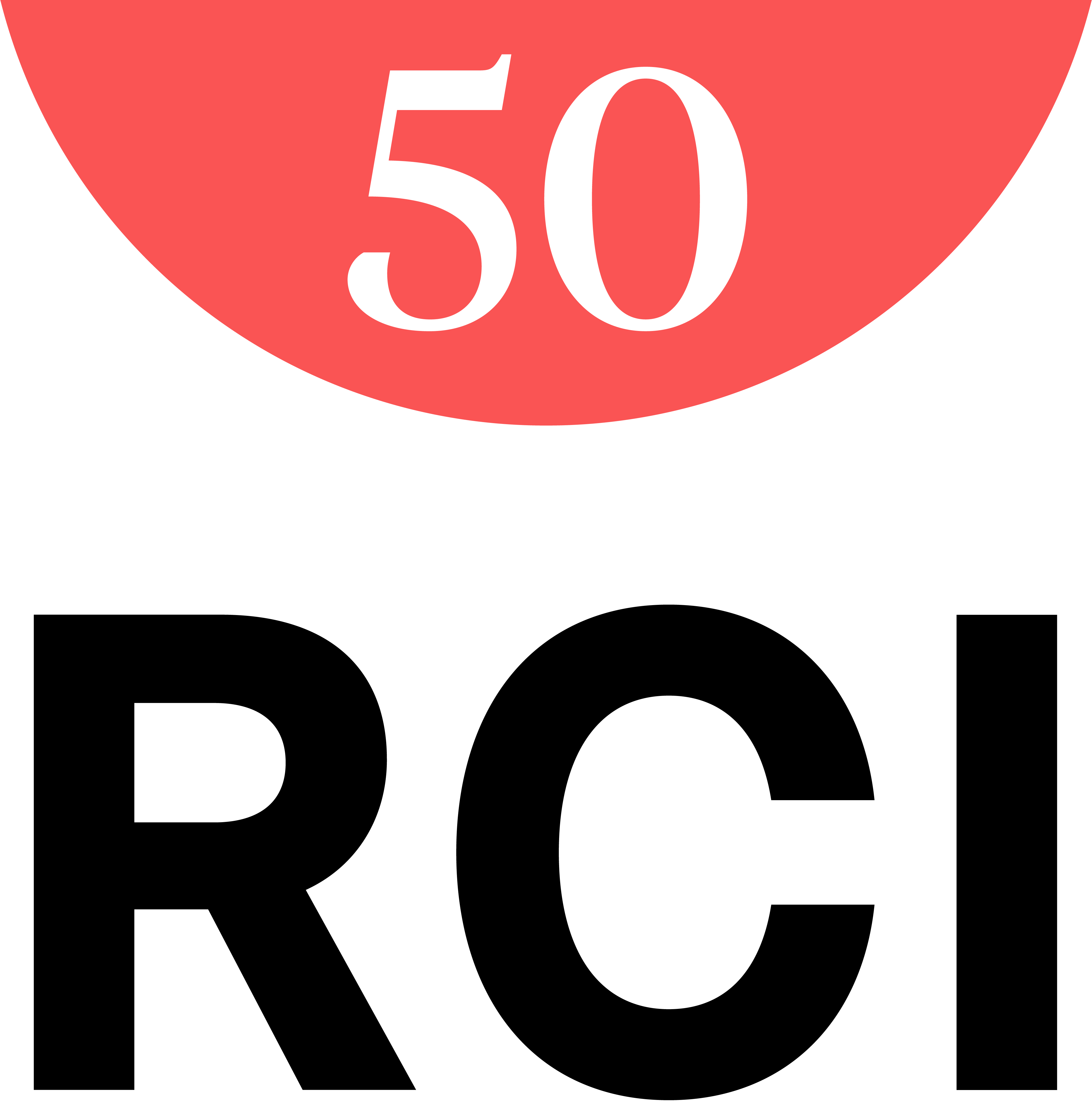Scads of wineries in France welcome visitors, but the point is to visit the ones that are grand cru (that is, exceptional) in terms of both history and landscape—offering not just a taste of the wine but also a taste of the regional wine culture and terroir. Here are 10 French estates that do just that.

Alsace
Hugel
Riquewihr, the home of this venerable producer (founded in 1639), is the wine village from central casting: geranium- bedecked half-timbered houses in a palette of warm colors and a quirky grid of cobblestoned streets, the whole lapped by a sea of vines. The Hugel tasting room is right next to the cellars, which the house claims hold the oldest wine barrel in the world. Hugel makes the full range of Alsatian whites, from dry Rieslings to flamboyant Gewürztraminers. All are available for tasting—an easy way to become a 30-minute connoisseur of the region. hugel.com
Burgundy
Château du Clos de Vougeot
The towers and gabled roof of this fortified Renaissance château are post-card perfect—which explains why the building appears on so many postcards sold in Burgundy. It’s right on the route- des-vins in Vosne-Romanée, which produces some of the finest Burgundy. The 125-acre Clos de Vougeot, a Grand Cru vineyard, is divided among 80 winemakers, some of whom own only a few rows of vines. That’s just one of the surprising things you learn on the 45-minute tour. Unfortunately, the wine is so scarce— the average production per owner is only 1,000 bottles—that there’s no tasting room. But you can go a few hundred feet up the road for a tasting at Domaine Bertagna (domainebertagna.com), an up-and-coming property that owns vines in Clos de Vougeot. closdevougeot.fr

The Riviera
Château de Crémat
The intertwined C’s carved into the stonework and etched into the windows here should look familiar. That’s right, they make up the Chanel logo, except Crémat had the logo first. In the 1920s, Coco Chanel was pals with the then owner, and he gave her the copyright as a gift. (The château’s logo is now CK, for current owner Cornelis Kamerbeek.) Crémat stands in the hills above Nice in the Bellet appellation, the smallest in France. The château, a mock-Gothic folly, serves as Kamerbeek’s residence. It’s not on the tour ($13*), but the vineyards and winery are, and afterward you have the run of the grounds. Don’t miss the Terrasse du Ciel (Terrace of Heaven) for its panoramic view of Nice and the sea. The easiest way to get here is on the No. 62 bus from Nice. Catch it at the Magnan bus station, and after a scenic 25-minute ride, it will stop right outside the château’s gates. 442 Chemin de Crémat, Nice.
Clos Sainte Magdeleine
This is the Miss World of vineyards, set on a thumb-shaped peninsula high above the Mediterranean. The wines are from the Cassis appellation (pronounced cass-see to distinguish it from the black currant liqueur) and the estate is best known for its white wine, exotic with notes of almond and honey. The tour takes in the domaine, where groves of olive, mulberry and almond trees grow, and the cellar, concluding with a tasting ($18 per person). Cassis, a particularly comely town, is 15 miles southeast of Marseilles. For one of the most scenic drives on this coast, follow the winding Route du Crête from Cassis to La Ciotat.
clossaintemagdeleine.fr
Rhone Valley
Château de Beaucastel
This top winery shows off the rugged vineyard landscape of Châteauneuf-du-Pape. The terrain’s chief peculiarity is its galets, softball-sized stones that look like the remnants of a meteor shower. In fact, they were torn from the Alps during the last Ice Age and deposited here. Some experts say the stones help ripen the grapes by absorbing heat during the day and releasing it at night. Beaucastel, one of Châteauneuf-du-Pape’s best, is the only property that still uses all 13 grape varietals permitted by law in the appellation. The tasting room is strictly workaday, but the impressive barrel room and the charming tour guide make up for that. By appointment only; beaucastel.com
Domaine de Coyeux
Beaumes-de-Venise, 20 miles northeast of Avignon, is the sweet spot of the Rhone Valley, known particularly for its dessert wine made from muscat, once called the Nectar of the Pope. The tasting room at this top producer, which also makes red wine, has an impossibly beautiful setting. The vineyards undulate away toward robust rock outcroppings called the Dentelles de Montmirail for their teethlike shape. The tasting room is in a modern rendition of a traditional Provençal mas, or farmhouse.
Route de Lafare, Beaumes-de-Venise
Château la Canorgue
This property is in Bonnieux, the classic Provençal hill town that formed the heart of the world described by Peter Mayle in his best seller A Good Year. In fact, the 17th-century château is such an exemplar—honey-colored stone, cornflower-blue shutters—that it was the setting for the 2006 film of the same name, starring Russell Crowe and Albert Finney. (Trivia: A swimming pool installed for the movie was later covered over and the ground replanted with vines.) The château is known for its handsome blue bottles—more like packaging for Swedish water than for French wine. Route du Pont Julien, Bonnieux

Bordeaux
Château Palmer
Now, this is what a château should look like—mansard roof, flagstaffs aflutter, witch’s cap turrets, vintage stonework and vineyards virtually brushing up against the facade. Château Palmer, built from 1857 to 1860, fulfills a Bordeaux saying: “The great terroirs overlook the river.” Its vineyards, speckled liberally with quartzite, chalcedony and lydite swept down millennia ago from the Pyrenees, lie on a gently rising terrace overlooking the Gironde River. The wine is classified as a third growth, but many experts contend that it regularly beats the Margaux appellation’s top estates. By appointment only; chateau-palmer.com
Château Smith Haut Lafitte
You come here for the vin and the vino- therapy. This is the only major-league French winery that offers not only tours and tastings but also a hotel, two restaurants and a 16-treatment-room spa, Les Sources de Caudalie. It is a celebration of vinotherapy—treatments using products made from grape seeds, which are valued for their antioxidant qualities. The tasting tour ($11) takes in the cellars, the vat room and the cooperage (this is one of the few châteaux that still make their own barrels) and finishes with a tasting of the château’s first- and second- growth wines. The Art and Vine tour ($20) covers the monumental sculptures scattered over the grounds. Advance booking required; smith-haut-lafitte.com
Château Mouton Rothschild
Cole Porter didn’t use this estate in the lyrics for “You’re the Top,” but he could have: In the wine world, it’s a synonym for apex and summit. Mouton, a Pauillac, is one of the five first-growth Bordeaux, and the only winery among them that is open to visitors. Besides the wine, the château is famous for its labels, created by a different artist every year since 1945, among them Pablo Picasso, Georges Braque, Salvador Dalí, Paul Klee, Marc Chagall, Keith Haring and Jeff Koons. (Go to theartistlabels.com to see them all.) By appointment only, two-week advance booking recommended; mouton-rothschild.com
NOTE: Information may have changed since publication. Please confirm key details before planning your trip.
